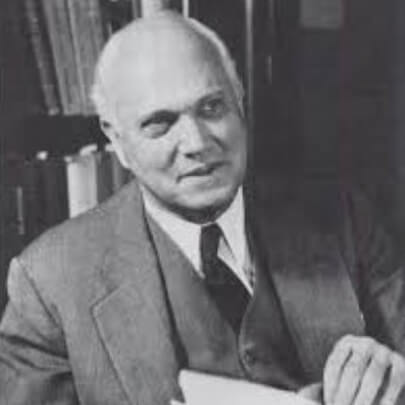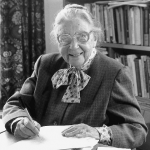![]()
Here is Herbert McLean Evans’ account of his discovery of vitamin E when he was professor of anatomy at the University of California at Berkeley in 1922.
“American biochemists, and I can name Mendel, Osborne, Sherman and McCollum, succeeded in showing that the materials grouped under vitamins A and B permitted growth to adulthood in rats.
And I asked myself if reproduction might not impose some unique need. This started it ; and I found that purified diets to which had been added vitamins A, B and D were not adequate in the maintenance of pregnancy. And then we found that whole grains, like rice and wheat and barley, contained what we called the ‘X’ or anti-sterility factor.
So I went to a place where they cracked wheat kernel with big steel rollers into three divisions : the coverings, the centre (endosperm) and the germ. I tried them all; and made extracts; the surface stuff gave us only some faint indication, the endosperm zero, but the germ was the potent stuff. I got nowhere with an aqueous extract, but right away with alcohol and ether found it possible to produce a beautiful brilliant yellow oil.
At that time, vitamins A and D were the only fat soluble vitamins known and cod liver oil, enormously high in A and D, did not prevent résorption of the young; in fact, they accentuated the trouble.
But one drop of the wheat germ oil for a day maintained pregnancy and it was certain that we had stumbled on a new fat soluble vitamin. You can see how we were led into calling it the anti-sterility vitamin.
Then Dr Barnett Sure of Arkansas said : ‘Why does Dr Evans keep on calling this vitamin X? It deserves the next serial letter. It is not A or D, because they fed tons ofthat and got nowhere.” I then called it ‘E’ with reasonable speed. But the reason that we discovered it, was because the foetuses in utero, at a particular time, failed and got resorbed.”
Evans began this account by admitting that it had been a mistake to call the new vitamin “the anti-sterility” vitamin. “I overlooked the most significant thing about it, that it had nothing specifically important to do with reproduction. It had to do with the voluntary musculature.”
from an interview in the Journal of Reproduction and Fertility (1969) 19, 1-49.



